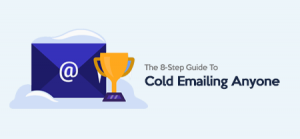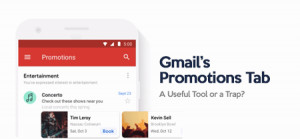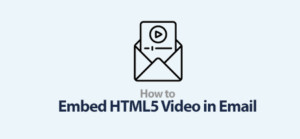Basic demographic information was once the key to driving demand generation. But now that this data is widely accessible, it is no longer sufficient to develop relevant marketing strategies.
Even worse, it's often inaccurate or out of date. Today, brands need to enrich their demographic data with more granular knowledge to create truly engaging marketing campaigns.
Your current data may tell you a lot about your customer, but it won't give you a complete picture of who they are.
To stand out in the age of big data, you need data enrichment tools that are powerful enough to bring together multiple data streams to build an exhaustive analysis of each customer.
Having an enriched and up-to-date database means you can develop more targeted campaigns and make sure that your marketing efforts are focused on really entrenching yourself in your audience's psyche.
Read on to find out how data enrichment can help you read between the lines of your raw, unstructured data and optimize your marketing efforts.
First, let's review the basics of data enrichment.
What is Data Enrichment?
Companies that collect data from multiple sources are likely to end up with a tangled mess of data strands that are inherently unreliable or don't contain sufficient information to be of any use.
Data enrichment helps to unlock the true potential of your collected data by contextualizing it and giving it greater credibility and precision. With supplementary data points integrated into your database, you can:
- Fill in missing gaps in your data
- Connect the dots between disparate sources
- Make sure that duplicate records don't exist in multiple locations
- Be more specific and accurate with targeting
- Generate new ad groups for your customers
- Glean additional insights from your previously gathered data
Data enrichment will help you create a single, seamless perspective on your customers. Often, this means fusing internal data with information received from external sources. But there are three main ways of enriching your data:
- Direct. Customers may choose to let you in on their preferences by responding to surveys.
- Internal. Data about the same user can be combined from multiple databases into a single record.
- External. You can use third-party services to enrich your contact database with data from other sources.
Enriched data helps build a sturdier data environment, thereby allowing you to maximize the value of your existing data silos. Additionally, it gives marketers better control over their campaigns. Data enrichment enables marketers to develop more productive strategies, which respond individually to each user's needs.
Data Cleansing vs Data Enrichment
Data cleansing involves finding and correcting data errors, ensuring data consistency, and keeping data updated. Enriching data, on the other hand, is all about augmenting and enhancing the data you have. The former keeps your data pristine by stripping out all the extraneous information while the latter makes your database richer by adding more valuable pieces of data to it.
Data cleansing and enrichment go hand-in-hand, but there's a hierarchy to the order in which they should be performed. Data cleansing typically happens first. This frees up space in the database for fresh information to be introduced.
Take, for example, your subscriber email list. In this case, you will first employ data cleansing to remove any weird, spammy, or fake email addresses from your database. Once you've scrubbed off the bad contacts, you'll be ready to move on to data enrichment. At that point, you will supplement the email addresses with additional data on things like industry, designation, etc. to segment and target your subscribers as effectively as possible.
Now that you have a good grasp of data enrichment, let's see how it can impact email campaigns.
Why Should You Use Data Enrichment for Your Email Marketing Campaigns?
When it comes to email marketing, your data is your most valuable asset. You can't expect your email marketing campaigns to perform well under the aegis of poor-quality data.
If you have outdated information or missing details, then your campaigns will have a hard time connecting with the right people. Data enrichment helps businesses achieve a 360-degree view of their customers. That way, they can effectively tailor-fit the needs of their audience and improve customer engagement.
By enriching your data with different elements from multiple databases, you can better understand the full scope of a customer's interests and actions around your products and services. This leads to a wide range of marketing benefits, including:
More Competent Lead Scoring
Data enrichment can be used to categorize leads based on real-time data. This ensures high-quality leads at all times and prevents your sales team from being bogged down with irrelevant prospects.
If a user has only entered their name and email address in your database, you may not be in any position to make use of their contact information. A lead generation tool will probably assign them a low score. And then, they'll be shown to you less often, as contacts with a minimal amount of information don't always make the best targets. But, if you have a data enrichment tool, you can link your existing knowledge of the lead with additional data points and identify if the user is actually worth pursuing. Based on this insight, you can revise your priorities to focus on the most valuable prospects.
High-grade Customer Segmentation
The most successful email marketing campaigns are those that strongly segment their target audience. This allows for more personalized and focused content delivery.
Through the lens of enriched data, you can acquire a more thorough perception of your audience. This will enable you to gain deeper market insights, increase the quality of your offers, and build potent customer segments. After all, the more you know about your target audience, the more precisely you can segment them.
A Better Level of Personalization
If your brand's email campaigns don't match your target audience's expectations, you're far less likely to succeed at creating long-term partnerships with them.
Personalized email marketing is a highly effective way to engage and retain customers. But the only way to personalize marketing interactions is to capture information about shoppers beyond primary demographic data.
Data enrichment will empower you to deliver individualized messaging campaigns that resonate with your target audience. You can strengthen your brand's reputation and appeal by valuing customers' opinions and identities.
Types of Data Enrichment
There is a great variety of data that a company can collect to enrich its database. Some of the most common types of data enrichment used in marketing are:
Demographical Data Enrichment
When marketing and advertising, you need to know who you're appealing to and who specifically your product is intended for. Because customer preferences differ based on their preferences and circumstances, businesses can gain a great deal from enhancing their demographic data. This type of data enrichment will allow you to:
- Produce target messaging that's attractive to specific demographic groups
- Ensure that your marketing messages are meaningful to the customer
- Increase the relevancy of your consumer experience
There are tons of demographic data points that you can use to enrich your database. So, it's important to keep in mind that demographic enrichment works best if you know precisely what kind of information you need to increase your marketing effectiveness.
Behavioral Data Enrichment
Behavioral data leads to a sharper understanding of how a customer behaves on a site. With it, you can gain crucial knowledge that helps your brand:
- Identify and comprehend the interests of a customer
- Structure a more intuitive UX design by better determining the types of products and content to display to a particular customer
- Get a better grasp of the customer journey and what triggers them to take action
By adding behavioral patterns to your customer profiles, you'll be able to find new ways to engage with a customer and make their path to purchase even clearer. For example, you can use behavioral data enrichment to send targeted follow-up emails. Just like how Cole Haan sends out behaviorally triggered emails to remind potential customers about items they considered buying but did not purchase.

Geographical Data Enrichment
Businesses can use enriched geographical data to communicate with their target audiences more effectively. It can help businesses:
- Serve messages to users at the correct time depending on their time zones
- Adapt the contents of your marketing materials to what might be of interest in a specific region or city
- Tailor your customer's emails to offer them products that are available in their area and appropriate for their season.
Incorporating geographical data can make prospects feel like they are part of your brand's community, ultimately leading to greater customer satisfaction and loyalty. A great example of this is Litmus's geo-targeted email campaign. To drum up interest and engagement for their Email Design Conference, Litmus decided to send location-specific emails.

The company distributed geographically tailored emails to subscribers in each of its conference locations — San Francisco, London, and Boston. This targeted approach earned them a 68% open rate compared to a 22% open rate for the general conference announcement.
How To Get Started with Data Enrichment
The road to a solid, accurate database can be long and bumpy. You have an array of internal and external data sources at your disposal, from direct surveys to services that have access to external records. Here's a quick walkthrough to help you navigate this labyrinth successfully.
Set your objectives for data enrichment
Before beginning to enrich your data, it's important to establish concrete goals for the process. When conducting data enrichment, businesses should focus on improving their data quality and accuracy. But that's too broad of a goal to tackle head-on.
To ensure you're capturing relevant data to support your company's marketing activity and boost your bottom line, start by:
- Identifying what information you'll need through data enrichment
- And why that information is important for your business
Only then can you determine the kind of logic that is most appropriate to your data enrichment process. Sometimes, it makes more sense to have your enrichment performed in the warehouse. Other times, you might prefer real-time enrichment so that your CRM always has the most up-to-date information about your customers. It all comes down to the type of logic you're applying to your data.
Use the right data enrichment tools
Manually preparing data for enrichment can be an utterly laborious and time-consuming process. Fortunately, there are data enrichment tools that make the process easier. These services are capable of collating information from a variety of different sources into a cohesive construct based on your needs. With the right data enrichment platform, you can boost your data quality and access third-party data to fill in your organization's blind spots. Firms often use multiple data enrichment tools to prepare data for use in different areas of their business, but it's important to choose the right ones that will fit into your data ecosystem.
Continually enrich your data
Data enrichment is not a one-time activity. Your data needs to be Your database needs regular enrichment to maintain its quality. Updating and enriching your data will assure your business stays relevant with up-to-date analytics.
If you’re not constantly updating and enriching your data, it will soon become irrelevant and useless. And if you’re not up-to-date with your analytics, you’ll be blind to the many changes happening within your industry — changes that could have a big impact on your business. And when that happens, what started as an asset becomes more of a liability.
You can use automated data enrichment solutions to stay on top of your data. With these tools, you will always have the latest information at your disposal.
Examples of Data Enrichment Tools
With so many different systems in play, pulling together robust customer data is no easy task. Yet, with the right kind of data enrichment tools and customized software, you can:
- Seamlessly augment your data
- Build more actionable customer personas
- Accurately identify valuable customers
Here's a list of some of the best data enrichment tools on the market.
DeBounce
DeBounce lets you enrich your contact database by using the power of reverse email lookups.
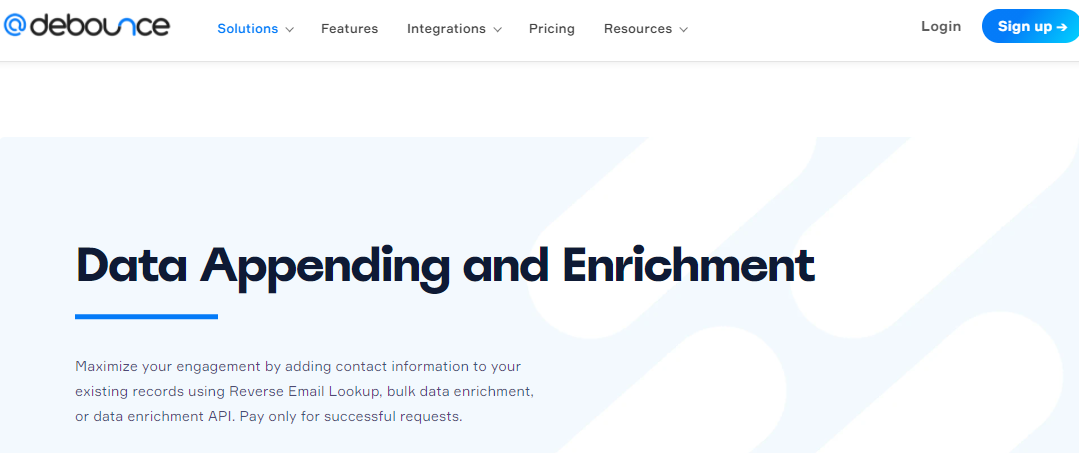
Features:
- With this tool, brands can bolster their contact lists with everything from full names to company affiliations.
- DeBounce also enables businesses to plump up their existing records with the vast trove of information gathered from social media channels.
Price:
DeBounce is ideal for small businesses that want to enrich their data without breaking the bank. Their data enrichment service costs start at $10 for every 5,000 verifications.
Clearbit
Clearbit helps businesses identify their ideal customer profiles, contact information, and more. By doing so, you will gain valuable information that can power omnichannel marketing campaigns.

Features:
- Just enter an email address or domain name on Clearbit, and it will pull up complete information on any contact.
- It is also compatible with most CRMs and marketing software.
Price:
Clearbit's pricing depends on your needs but generally starts at $100 per 1,000 API requests.
Vainu
Vainu is Europe's leading company data platform.

Features:
- It lets you automatically inject relevant or missing data and pushes it into your database.
- You can update thousands of data points with just a few clicks and see your changes reflected immediately. The platform offers native integrations with Salesforce, HubSpot, and many other tools.
- You can even connect Vainu to other systems via Zapier.
Price:
A year of Vainu's service costs $7,250.
Leadspace
Leadspace's data management platform lets you clean, enhance, and manage your company's data.
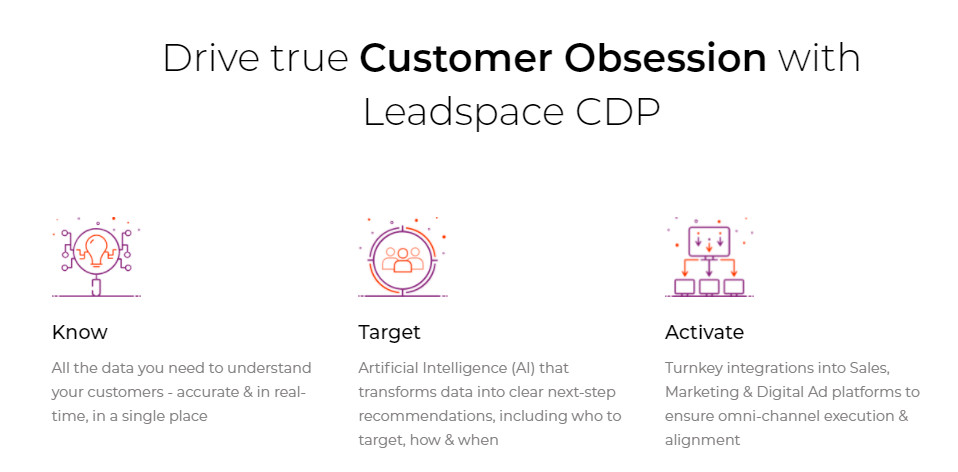
Features:
- Using artificial intelligence to discover actionable insights, Leadspace offers targeted audience-based marketing. This helps businesses convert more leads into customers.
- With the use of Leadspace's business intelligence tools, you can secure lasting customer engagement.
Price:
Leadspace offers highly customized plans. So, businesses will have to contact them for specific pricing.
Crunchbase Enterprise
Crunchbase is one of the most popular databases for startups.
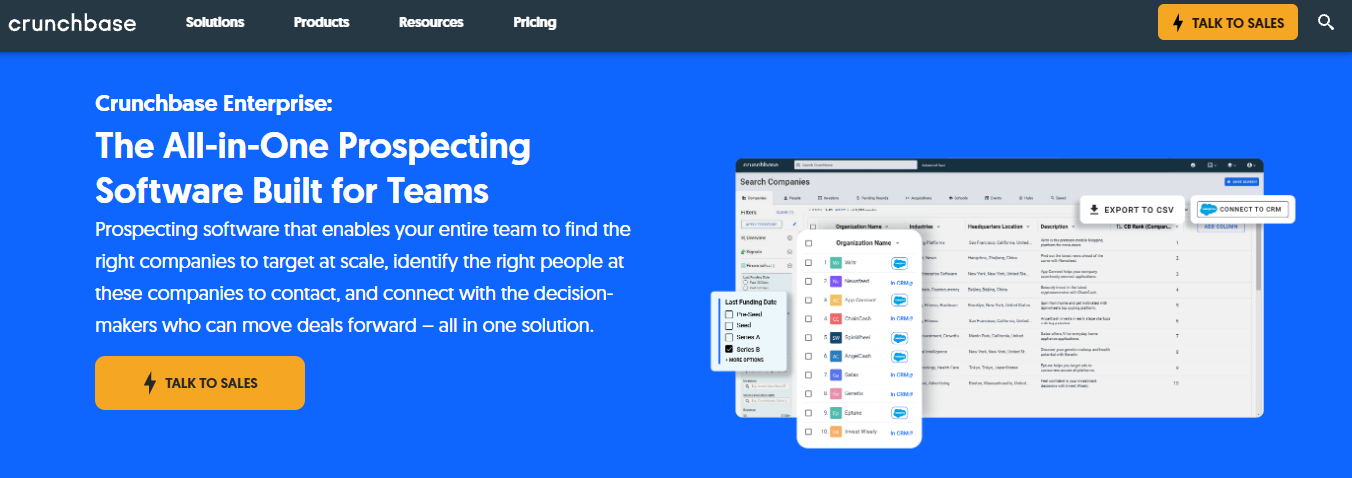
Features:
- It offers information on funding, investors, company profiles, etc.
- With Crunchbase Enterprise, all their data is accessible directly through your CRM.
Pricing:
Crunchbase Enterprise is priced on a client-specific basis.
Blue Mail Media
Blue Mail Media provides a variety of data-enriching solutions.
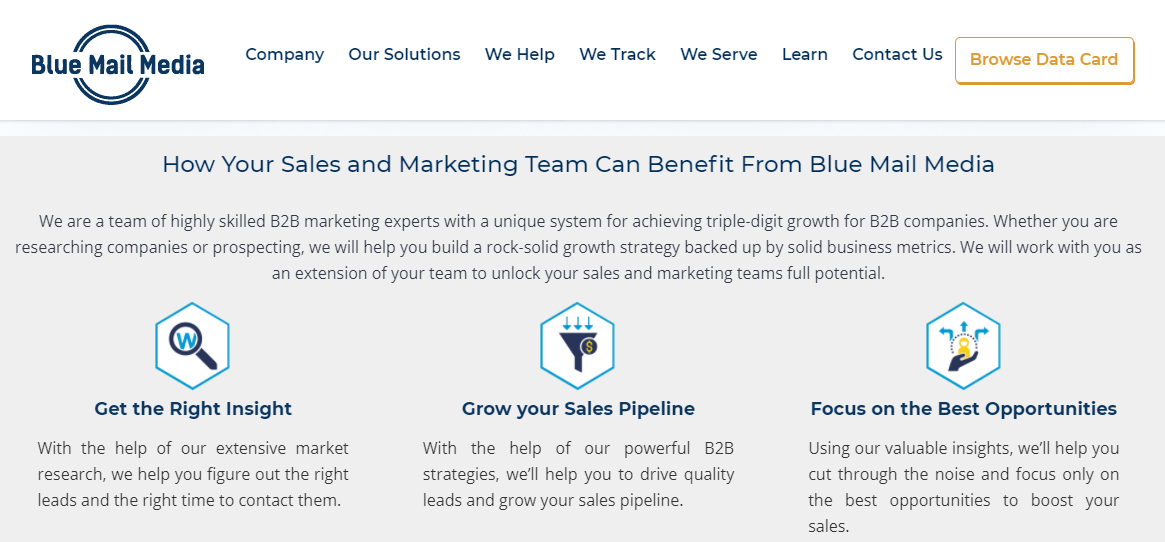
Features:
- They help businesses reach potential leads and increase their leads pipeline.
- The company's data enrichment services also make certain that your leads are always contactable and relevant. This is done to safeguard the success of your marketing campaigns.
Price:
Blue Mail Media's pricing model will be made available to you after you request a quote.
InsideView
InsideView integrates with your CRM and cleans up information that has gone out of date.
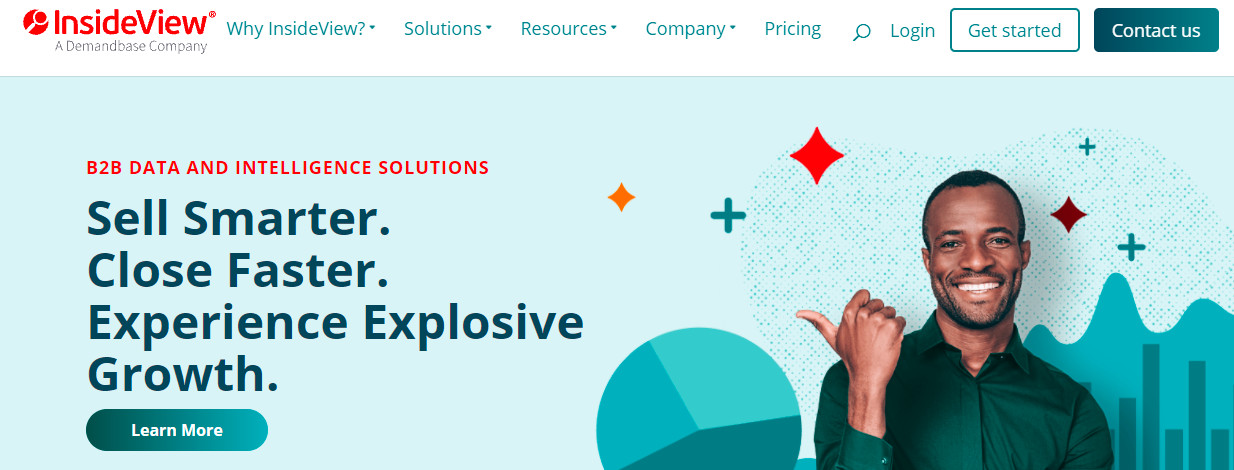
Features:
- It verifies all your data points in real-time. So, you can create accurate descriptions of your leads.
- InsideView also helps you better identify and connect with your prospects.
Pricing:
InsideView’s lead enrichment features start at $6,000. Data management costs are not included in this price.
How To Avoid Common Pitfalls When Implementing a Data-enriched Email Campaign
Data enrichment can be a game-changing tool for marketers. But they also need to be aware of the challenges and flaws associated with implementing a data-enriched email campaign. To ensure that you do not make these potential pitfalls worse, take a step back and consider the following:
Undeliverable Emails
When choosing a data enrichment service, make sure that their list is up-to-date and has already been scrubbed against spam traps. An email database that contains undeliverable addresses can negatively affect your campaign. For this reason, it's imperative to use a service that only provides valid and live email addresses.
Disregarding cleaning of data
Don't bother with a data appending service if they refuse to perform the basic task of weeding out errors. An error-free data source gives campaigns a better chance of being successfully executed.
Putting price before quality
Do not get carried away by price tags. Make sure to pick a company that has the proper knowledge and experience to get the job done quickly and effectively. The quality of the enrichment service you receive should be your top priority.
Get the most out of your collected data
Data can be just as useless as it can be useful. Raw unstructured data needs to be cleaned, processed, and enriched in order to yield meaningful analytical insights. Your goal shouldn't simply be to gather as much information as possible but to build enriched high-octane profiles that your company can use to create targeted marketing campaigns for your audience.




